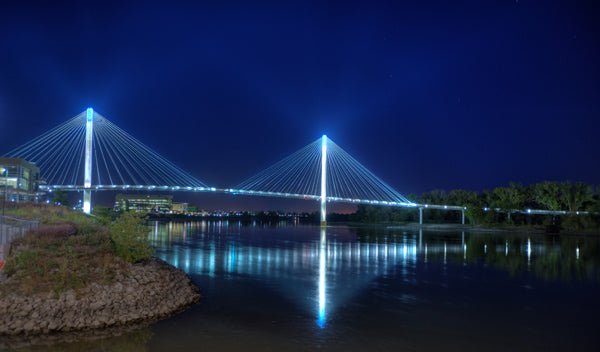In the captivating domain of architectural lighting design, the pursuit of dynamic illumination unveils a harmonious blend of technological prowess, creative finesse, and functional precision. The transition from static lighting to dynamic experiences introduces a realm of artistry and innovation. This article delves deep into the world of dynamic architectural lighting design, shedding light on the distinctive challenges that designers navigate as they sculpt environments that pulsate with the magic of light.
Exploring the Landscape of Dynamic Architectural Lighting Design
Dynamic architectural lighting design signifies a departure from conventional static lighting setups. It encompasses the deliberate orchestration of light and shadow, color gradients, and visual sequences that evolve over time. This innovative approach transcends traditional illumination, turning architectural structures into living canvases that mesmerize, engage, and evoke emotions.
Striking the Balance: Aesthetics and Functionality
Achieving a delicate equilibrium between aesthetics and functionality emerges as a unique challenge in dynamic architectural lighting design. While artistic intent seeks to stir emotions and create visually captivating spaces, the lighting must also serve practical purposes. This challenge mandates designers to seamlessly weave dynamic elements while preserving the holistic architectural harmony.
Harmonizing aesthetics and functionality involves considering factors such as light distribution, glare management, and energy efficiency. Designers must skillfully integrate dynamic lighting without compromising the overarching architectural integrity.
Synergy with Technology: Taming Advanced Lighting Systems
The heart of dynamic architectural lighting design beats in sync with cutting-edge lighting technologies. The challenge arises in effectively harnessing these advanced systems to achieve the desired dynamic effects. This requires a meticulous interplay of various lighting fixtures, control mechanisms, and programming techniques to ensure a synchronized and cohesive lighting experience.
The selection and strategic placement of fixtures stand as pivotal decisions. LED fixtures, color-shifting luminaires, and motorized mechanisms often come into play to realize dynamic lighting sequences. Designers must possess an in-depth understanding of these technologies to harness their potential to the fullest.
Crafting Narratives: Illuminating Stories Through Light
Designing dynamic lighting transcends illumination—it's about narrating stories with light. The challenge here lies in creating lighting sequences that evoke emotions or reflect the space's purpose. Whether it's accentuating architectural features, guiding occupants through an experiential journey, or transforming environments for diverse events, designers must craft narratives that resonate.
Narrative-driven lighting demands a deep comprehension of spatial aesthetics and a keen sense of intended emotional impact. Sequences must be orchestrated to take occupants on immersive journeys, enhancing their overall experience.
Precision in Programming: Navigating Complexity
Programming dynamic architectural lighting introduces a realm of complexity. Designers must craft meticulous programs that seamlessly transition between diverse effects and intensities. This precision necessitates a profound grasp of lighting control software and the ability to synchronize cues with meticulous accuracy.
Furthermore, dynamic lighting often requires real-time adjustments based on events, seasons, or user preferences. This adds another layer of complexity, demanding programming finesse to ensure fluid transitions and adaptability.
Longevity and Sustainability: Ensuring the Future
Sustaining dynamic lighting systems poses a challenge. Programming and control systems must exhibit robustness to endure continuous operation, and fixtures must maintain their performance over time. Addressing maintenance concerns, such as preserving color consistency and mitigating technical glitches, proves vital to ensure the lasting impact of dynamic lighting designs.
In Conclusion: A Canvas of Challenges, a Tapestry of Innovation
Mastering dynamic architectural lighting design is a journey that embraces challenges and births innovation. Striking the delicate balance between aesthetics and functionality, integrating advanced technology, crafting narratives through light, precision in programming, and ensuring system sustainability, all contribute to an intricate endeavor that elevates architecture into immersive experiences.
Amidst the challenges, dynamic architectural lighting design opens the door to unparalleled creative expression. Designers push boundaries, transforming buildings into living works of art that inspire, narrate, and redefine architectural spaces. As technology advances and creative possibilities expand, the journey of mastering dynamic architectural lighting design continues to beckon with uncharted avenues of brilliance.

